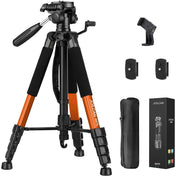Portrait photography is a beautiful art form that focuses on capturing the essence of the human spirit. It not only requires technical proficiency but also an understanding of the subject's mood, feelings, and personality. Whether you are a seasoned photographer or a beginner, this guide will delve into the essentials of portrait photography, equipping you to turn fleeting moments into lasting memories. Let's explore how to enhance your skills and create stunning portraits that resonate with viewers.
Understanding the Basics of Portrait Photography
Before you grab your camera, it's crucial to understand the basics of portrait photography. This genre is all about the relationship between the photographer and the subject, creating an intimate atmosphere that allows genuine expressions to emerge.
The Importance of Lighting
Lighting can make or break a portrait photograph. Natural light is often the most flattering, but controlled artificial light can be equally effective. Here are some tips on how to use lighting to your advantage:
- Golden Hour: Shoot during the golden hour—one hour after sunrise and one hour before sunset—for soft, warm lighting.
- Shadows: Use shadows creatively to add depth and emotion to your subjects.
- Reflectors: Utilize reflectors to bounce light onto your subject, reducing harsh shadows.
Engaging Your Subject
Creating a comfortable environment for your subject is key to capturing genuine expressions. Building rapport is vital. Here are some strategies to engage with your subject:
- Start with a conversation to break the ice.
- Encourage your subject to express themselves through actions or different poses.
- Offer positive feedback throughout the shoot to build confidence.
Technical Composition and Camera Settings
Beyond effective lighting and engagement, understanding technical aspects such as composition and camera settings will elevate your portraits. Let’s dive into some critical elements to consider:
Camera Settings
The right camera settings can drastically change the mood and clarity of your portrait. Here’s what to focus on:
- Aperture: Use a wide aperture (like f/1.8 to f/4) to create a shallow depth of field, which blurs the background and makes your subject pop.
- Shutter Speed: Choose a shutter speed of 1/100 or faster, especially for capturing candid moments to avoid motion blur.
- ISO: Keep ISO low (100-400) in well-lit conditions or raise it in dim ones, but be cautious of too much grain.
Framing and Composition
Proper framing transforms a good photograph into a great one. Consider the following techniques:
- Rule of Thirds: Divide your frame into a 3x3 grid and position your subject along these lines for a balanced composition.
- Leading Lines: Use natural lines within the scene to guide the viewer’s eye towards your subject.
- Negative Space: Use negative space strategically to accentuate your subject and create a modern aesthetic.
The Role of Color and Background
Color plays an essential role in portrait photography, invoking emotions and setting a mood. From the outfits your subjects wear to the backdrop, here's how to master color and backgrounds:
Selecting the Right Background
Choosing an appropriate background can enhance or detract from your portrait. Consider:
- Simple and Clean: Plain backgrounds draw attention to the subject. Look for textured walls, trees, or open fields.
- Complementary Colors: Colors in your subject's outfit should complement the background to create visual harmony.
- Contextual Backgrounds: Use locations that add context to your subject’s story, like a musician at a concert hall or an artist in their studio.
Color Theory in Portraits
Understanding color theory can help you create emotionally charged images. Here are a few principles to consider:
- Warm Colors: Reds, oranges, and yellows evoke energy and warmth.
- Cool Colors: Blues, greens, and purples can convey tranquility and calmness.
- Contrast: High contrast can bring a dramatic feel to your portraits, enhancing emotional responses.
Post-Processing Techniques
Once you've captured your images, the editing stage can significantly enhance their impact. Familiarizing yourself with post-processing techniques is essential. Here’s a look at some editing tips:
Basic Editing Tools and Techniques
Getting started with post-processing may seem daunting, but basic editing can elevate your portraits without losing the organic feel. Focus on:
- Cropping: Fine-tune your composition by cropping extraneous elements.
- Color Correction: Adjust the color balance to ensure skin tones look natural.
- Sharpness and Clarity: Increase sharpness slightly for added detail but be cautious to avoid a harsh look.
Advanced Techniques
Once you're comfortable with the basics, you might explore advanced techniques, such as:
- Skin Retouching: Use tools to smooth skin while retaining texture for a natural appearance.
- Dodging and Burning: Brighten highlights and deepen shadows to add dimension to features.
- Creative Effects: Consider applying artistic filters sparingly to convey a story or mood
Preparing for a Successful Shoot
The key to a successful portrait shoot extends beyond your skills; preparation is equally important. Here’s how to best set yourself up:
Planning the Shoot
Planning ensures that you capture the essence of your subject effectively. Consider the following:
- Session Goals: Discuss the purpose of the shoot with your clients—whether it’s for personal use, professional portfolios, or social media.
- Location: Scout locations beforehand to gauge lighting and potential backgrounds.
- Outfit Choices: Encourage clients to choose outfits that reflect their personality while aligning with the shoot's theme.
Proper Equipment
Having the right equipment is vital for capturing high-quality portraits. A camera with interchangeable lenses and a sturdy tripod are essential. Don't forget to invest in practical accessories like a 3 pack camera batteries to ensure you’re ready for prolonged shooting sessions.
Realizing the Power of Emotion
Ultimately, the heart of portrait photography lies in emotion. Capturing the feelings and stories behind the faces in your lens can create a connection with viewers. Consider these final tips:
- Authenticity: Encourage genuine emotions. Sometimes, candid shots tell the best stories.
- Connection: Build a moment between you and your subject that fosters trust, allowing for authentic representations.
- Flexibility: Stay adaptable; sometimes the unplanned moments yield the most powerful portraits.
Embarking on Your Portrait Photography Journey
Embracing the art of portrait photography offers a rewarding opportunity to express creativity and capture profound moments. As you dive deeper into this exciting field, remember that practice is vital. Keep experimenting with lighting, camera settings, and composition. Stay engaged with your subjects, and seek to create a storytelling experience that speaks to the viewer. With each click of the shutter, you're not just taking a picture—you're capturing the human spirit. By continuing to learn, explore, and embrace new techniques in every shoot, you're well on your way to becoming a master of portrait photography.











